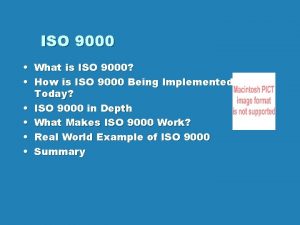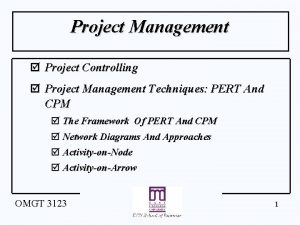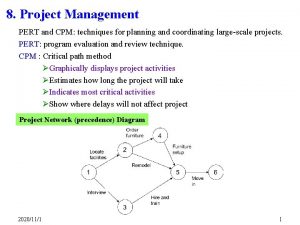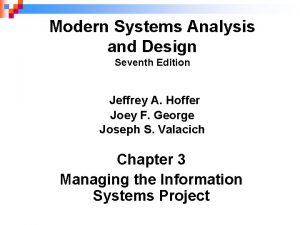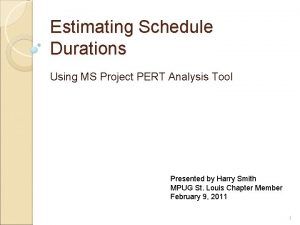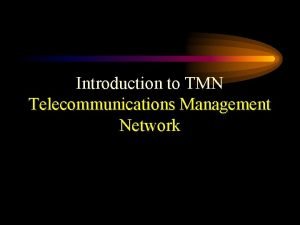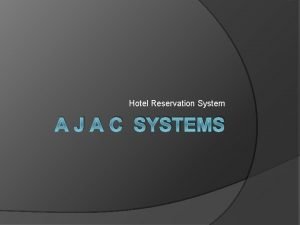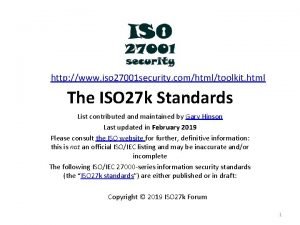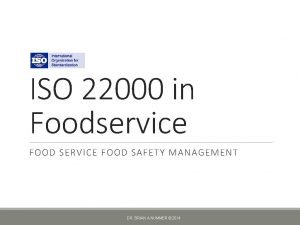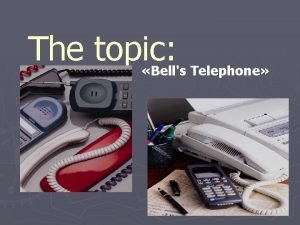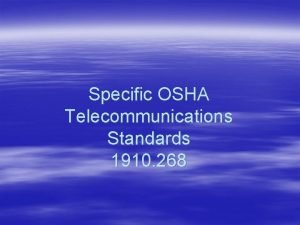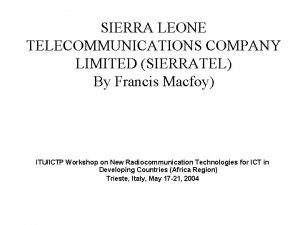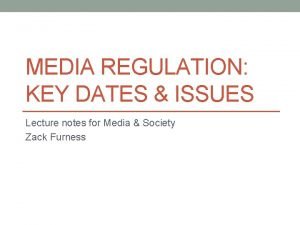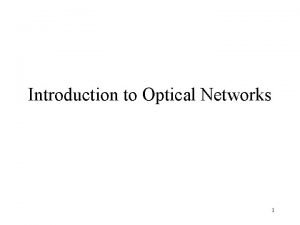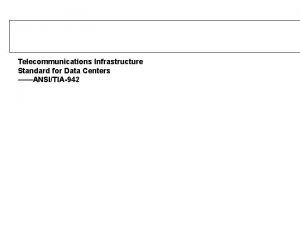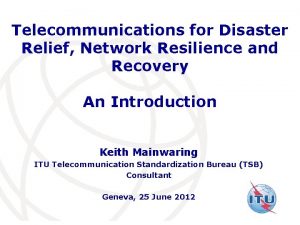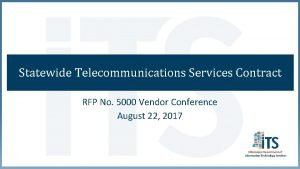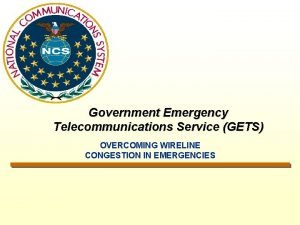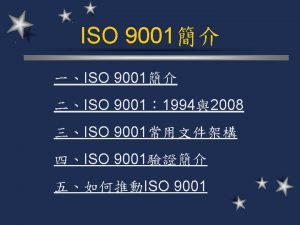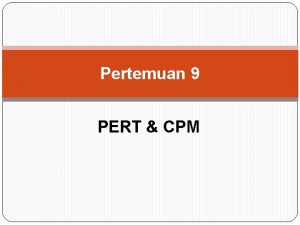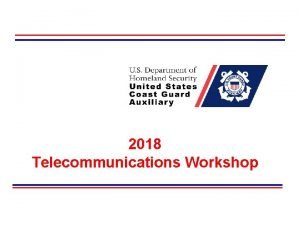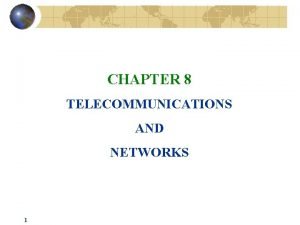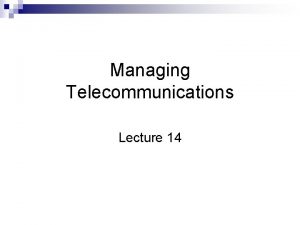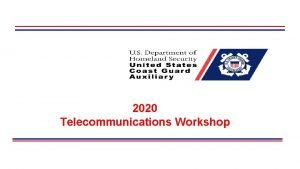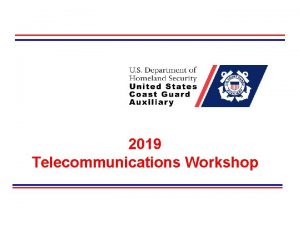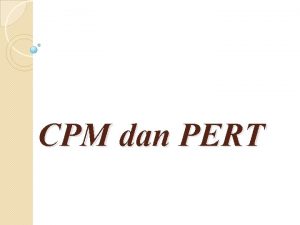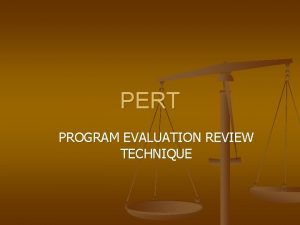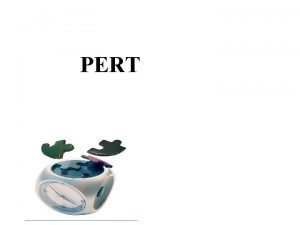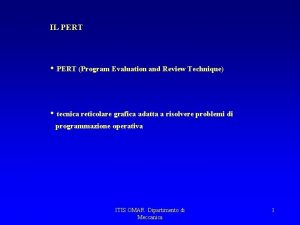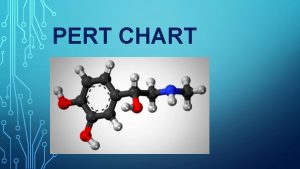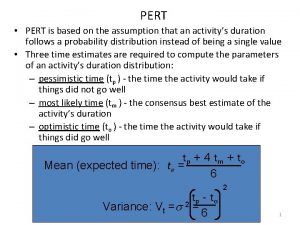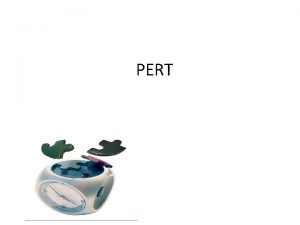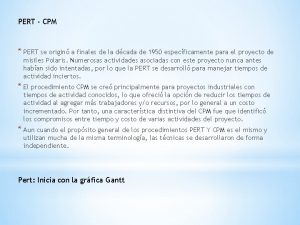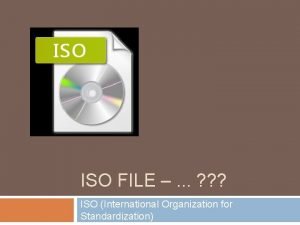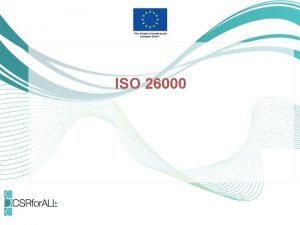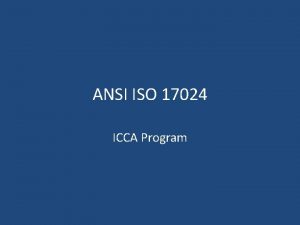Telecommunications Project Management Quality Management PERT Quality ISO




























- Slides: 28

Telecommunications Project Management Quality Management PERT

Quality ©ISO 9000 ©“Totality of feature and characteristics of a product or service that bears on its ability to satisfy stated or implied needs” ©Figure 20 -1

Quality Control ©Equipment design ©Project quality ≠ Management of operations ©Telecom: Service = Product ©Project quality and Operations quality boundary unclear ©Quality control ©Verify project deliverables comply with standards set ©Take action if needed

Telecom Quality Control Overlapping requirements 1. Network operations and maintenance 2. End-user experience © Include internal workers © If well executed and follow best practices may still lead to failure

Quality and Innovation © Identify demographics © Identify needs →Project specs © Sustaining innovations © Oral transmission of knowledge © Social interactions © Service platform innovations © More involved due to technology leap © More uncertainty © Disruptive innovations © Customer profile fuzzy & expectations tentative © Reinvent the “wheel” © Quality decisions pass from engineers to lawyers and accountants

Quality and Cost ©Prevention cost – Cost of all activities to prevent known defects from affecting agreed service levels ©Appraisal cost – Cost during evaluation of equipment due to inspections, tests, etc. ©Failure cost – Cost of experiencing a failure during operation

Quality Examples ©PSTN ©Lasts 30 or more minutes & disrupts 1000 subscribers ©Causes loss of service to a government response agency ©Must report to the Network Reliability Council any outage that affects 30, 000 subscribers >30 minutes

Quality Examples ©Enhanced services (data, Vo. IP) ©Defined by service level agreements (SLA) ©More than 5% of active ports unusable for >30 minutes ©More than 10% of active ports unusable ©Qo. S agreements ©Table 8. 1

Service Release Management ©Total Quality cost = Prevention cost + appraisal cost + failure cost <Upper bound cost of quality ©Appraisal cost < Prevention cost + failure cost ©Table 8. 2

Quality Plan 1. Quality targets – performance limits within that service will meet sponsor’s objectives 2. Resources allocated for implementation – features & methods to be tested & expected behavior 3. Data collection – what to be complied © accuracy & relationship (I. e. hardware failures not included in software reliability) 4. Data analysis – track project progress

Quality Plan 5. Improvement plan – resolve difference between observed and desired behaviors 6. Communication – inform customer concerning project status 7. Retain methodology and information

Categorization of Defects: Urgency and Criticality Figure 8. 1 Table 8. 4

Appraisal 1. 2. 3. 4. Unit/Module Tests Functional Tests Integration Tests Systems/Software Quality Assurance test (SQA) 5. Customer Acceptance Testing

Telecom Non-Incremental Innovation ©Figure 8. 3

Evaluation of Testing Progress 1. Number of test cases executed, passed, failed and blocked 2. Progress 3. Percentage and number of tests passed 4. Number of unresolved critical or major defects 5. Number of defects without root cause analysis: could not be solved with available resources 6. Turnaround time for defect resolution

When to Stop Testing ©Vendor fixed all critical defects discovered and all major defects that do not have acceptable workarounds ©Finding of defects is typically zero after all tests ©After all tests completed, expected number of critical or major problems less than predefined number

Vendor Management During Testing ©Figure 8. 10

Total Quality Management (TQM) © System for integrating organizational elements into: ©Design ©Development ©Manufacturing efforts ©Cost-effective products/services to customer © Externally – Customer oriented & provides customer satisfaction © Internally – Reduces production line bottlenecks and operating costs – improves product quality and organizational morale

Program Evaluation and Review Technique (PERT) © Similar to Critical Path Method (CPM) © Requirements: ©Individual tasks must be clear enough to put in a network (WBS) ©Events and activities must be sequenced that allow critical and sub-critical paths (10 - >100) ©Time estimates made on a three way basis ©Optimistic, most likely, pessimistic ©Critical path and slack times computed

PERT advantages © Extensive planning © Network development and critical path show interdependencies and problems otherwise hidden © Determine the probability of meeting deadlines by developing alternative plans © Ability to evaluate effect of changes © Large amount of sophisticated data presented in a well-organized diagram

PERT Disadvantages ©Complexity adds to implementation problems ©More data requirements ©Expensive to maintain ©Utilized most often on large, complex programs

Network Events and Activities © Event – milestone © Activity – Element of work that must be accomplished © Duration – Total time required to complete activity © Effort – Amount of work actually performed during duration © Critical Path – Longest path through the network and determines the duration of the project

Standard PERT terms ©Figure 12 -1

Gantt vs. PERT Chart ©Figure 12 -3

Series vs. Parallel PERT Chart ©Figure 12 -13

Expected Time Between Events te = a + 4 m + b -------6 te = expected time a = most optimistic time b = most pessimistic time m = most likely time

Estimate Total Project Time σt e = b – a -----6 σte = standard deviation of the expected time Figure 12 -15

PERT Disadvantages ©End-item oriented – removes ability to make decisions ©Unless repetitive project – little historical information to base cost estimates of most optimistic, most pessimistic, and most likely ©Each division of organization may use its own method for estimating costs
 Iso 9000 norma
Iso 9000 norma Telecommunications project management
Telecommunications project management Project management techniques pert and cpm
Project management techniques pert and cpm Project management pert and cpm
Project management pert and cpm Pert project management example
Pert project management example Pert in ms project
Pert in ms project Tmn functional architecture
Tmn functional architecture Introduction to software project management
Introduction to software project management Hotel reservation system documentation doc
Hotel reservation system documentation doc Iso-a
Iso-a Iso 8583 to iso 20022 mapping
Iso 8583 to iso 20022 mapping Iso 27014:2013 is the iso 27000 series standard for
Iso 27014:2013 is the iso 27000 series standard for Ohsas 18001 iso 14001 comparison
Ohsas 18001 iso 14001 comparison Iso 9000 iso 22000
Iso 9000 iso 22000 A pioneer in the field of telecommunications
A pioneer in the field of telecommunications Telecommunication meaning
Telecommunication meaning Osha telecommunications standards
Osha telecommunications standards Sierra leone telecommunications company
Sierra leone telecommunications company Telecommunications act of 1996
Telecommunications act of 1996 Venture capital telecommunications
Venture capital telecommunications Telecommunication network architecture
Telecommunication network architecture Unstructured cabling
Unstructured cabling Electronics and telecommunications research institute
Electronics and telecommunications research institute Telecommunications, the internet, and wireless technology
Telecommunications, the internet, and wireless technology Telecommunications for dummies
Telecommunications for dummies Telecommunications the internet and wireless technology
Telecommunications the internet and wireless technology Disaster recovery telecommunications
Disaster recovery telecommunications Rfp for telecommunications services
Rfp for telecommunications services Government emergency telecommunications service
Government emergency telecommunications service
